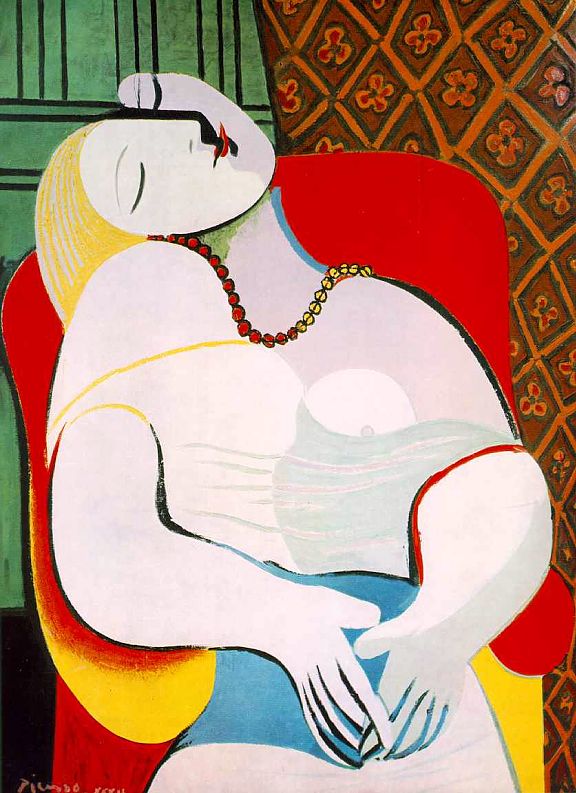From Picasso’s Blue Period to Cubism: How Color and Line Shattered Traditional Art
For art enthusiasts and oil painting lovers, Pablo Picasso remains a towering figure whose work redefined what art could be. His journey from the somber tones of the Blue Period to the fragmented visions of Cubism isn’t just a personal evolution—it’s a revolution that shattered centuries of traditional artistic rules. Let’s dive into how this genius used color, line, and bold experimentation to rewrite the history of oil painting.
The Blue Period (1901–1904): Emotion in Monochrome
Before Picasso became the pioneer of abstract forms, he painted a world steeped in blue. The Blue Period emerged from a period of profound personal struggle: the death of his close friend Carlos Casagemas, financial hardship, and a deep empathy for society’s outcasts.
In works like The Old Guitarist (1903) and La Vie (1903), Picasso wielded blue not just as a color, but as a emotional language. The cool, desaturated blues and indigos create a sense of isolation and melancholy, focusing on beggars, prostitutes, and the downtrodden. What’s revolutionary here? He rejected the bright, idealized palettes of academic painting, proving that oil paint could convey raw human emotion without relying on realism.
For oil painters today, the Blue Period is a masterclass in color psychology. Picasso showed that a limited palette—when used with intention—can be more powerful than a rainbow of hues. His brushstrokes, though restrained, carry weight: thick, deliberate layers of oil that build texture, making the figures feel tangible, their suffering almost touchable.
The Rose Period (1904–1906): A Shift in Tone, Not in Purpose
As Picasso’s circumstances improved, his palette lightened. The Rose Period introduced warm pinks, oranges, and beiges, inspired by his newfound optimism and love affair with Fernande Olivier. Works like The Actor (1904) and Family of Saltimbanques (1905) depict circus performers with a softer, more hopeful energy.

But don’t mistake the warmth for complacency. Picasso was still challenging norms: he focused on marginalized subjects (circus folk, seen as outsiders) and simplified forms, moving away from the hyper-detailed realism of the past. This shift laid the groundwork for what came next—proving that oil painting could evolve with the artist’s changing worldview.
Cubism: Tearing Up the Rulebook of Perspective
By 1907, Picasso was ready to explode tradition entirely. With Les Demoiselles d’Avignon, he introduced the world to Cubism—a style that shattered objects into geometric fragments, showing multiple viewpoints at once. Gone was the single, “correct” perspective of Renaissance art; instead, Picasso invited viewers to reconstruct reality through their own eyes.
Take Girl with a Mandolin (1910): the figure, instrument, and background are broken into overlapping planes, each a different shade of brown, gray, or cream. It’s disorienting at first, but that’s the point. Picasso believed reality isn’t static—it’s a collection of moments, angles, and memories. For oil painters, this was a revelation: the canvas wasn’t a window to copy the world, but a playground to reimagine it.
Cubism didn’t just change painting. It influenced sculpture, architecture, and even graphic design, proving that art’s purpose isn’t to replicate life, but to make us see it anew.
Why Picasso Matters for Today’s Oil Painters
Picasso’s journey from blue melancholy to cubist chaos holds a powerful lesson: great art isn’t about following rules—it’s about breaking them with purpose. Whether you’re painting a realistic portrait or experimenting with abstract forms, his work reminds us that oil paint is a tool for emotion, innovation, and self-expression.
At OilPaintingStar.com, we celebrate this spirit of creativity. Whether you’re drawn to the moody depth of the Blue Period or the bold experimentation of Cubism, our hand-painted oil reproductions capture the essence of Picasso’s genius. Explore our collection to bring a piece of this revolutionary legacy into your home.
After all, art that challenges tradition is the art that lasts.